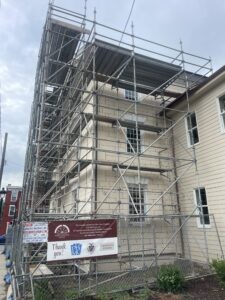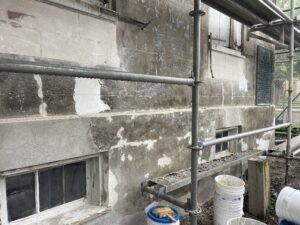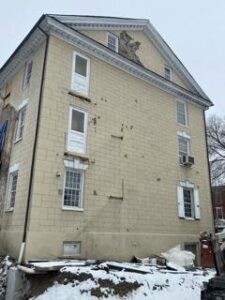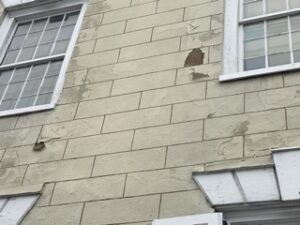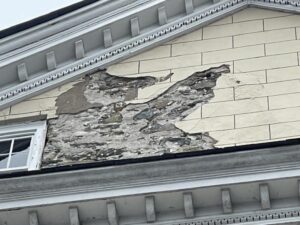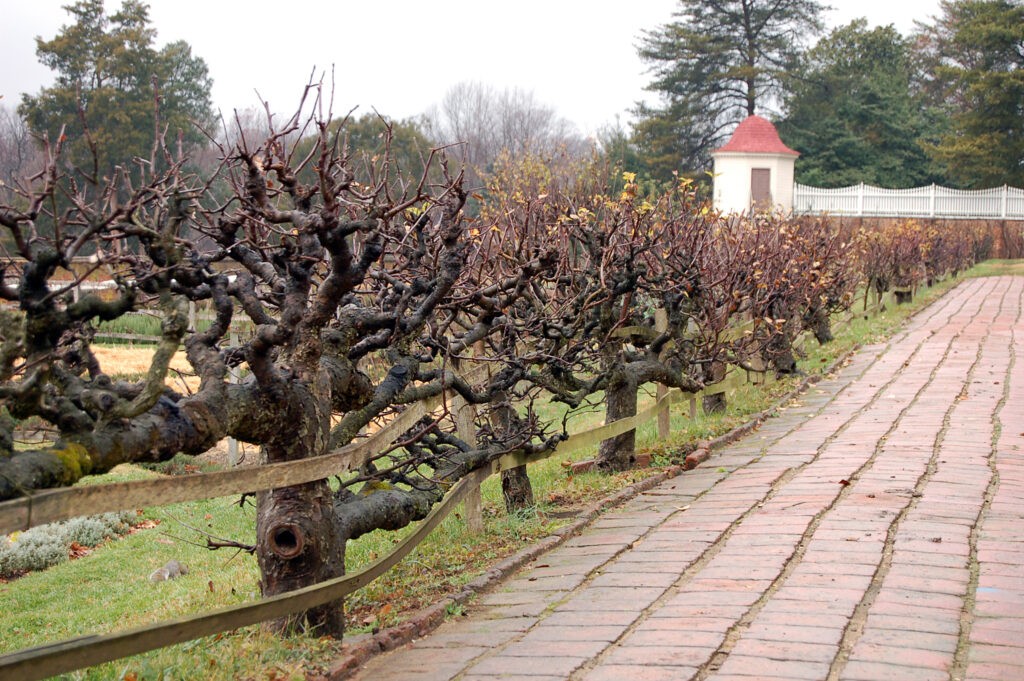Restoring the Stroud Mansion

Stroud Mansion History
Vivid murals adorning the sides of buildings along the main road in downtown Stroudsburg, Pennsylvania. They highlight the borough’s history as an industrial town that now is reborn as a tourist spot for those seeking the region’s vibrant art scene alongside easy access to the recreation the Poconos promise.
Since its official incorporation in 1815, Stroudsburg and the Stroud Mansion (built earlier in 1769) have seen the area grow, develop, and change as the region needed. The Stroud Mansion itself has also adapted over the years. According to the Monroe County Historical Association:
“The property remained in the Stroud family until 1893, and has served as a family home, boarding house, store and the town library. Since 1921, it has been home to the Monroe County Historical Association. It is listed in the National Register of Historic Places, and features such classical details as a symmetrical facade, flat-arch window lintels with pronounced keystones, simulated stone walls and quoins that accentuate the corners, plus tooth-like dentils beneath the cornice.”
The Restoration
The building itself is a rubble stone building with a lime stucco render that had incised lines carved in to resemble cut blocks of stone so the mansion appeared to be made of quarried ashlar blocks that the elegant homes of Philadelphia were constructed of. This was a common technique throughout history but also requires maintenance to keep up. The “mortar joints” are simple painted lines within the incised grooves called “pencilling”. This work was done on all four floors for all four sides. It was no small feat to complete. By the spring of 2025, the exterior of the building needed some significant care. Decades of well-meaning but inappropriate material repairs were taking their toll on the historic facade.
deGruchy Masonry Restoration and the LimeWorks.us Technical Install Team were honored to be chosen to perform this restoration work. Customized Ecologic™ Brand Potassium Silicate Paints were produced by the LimeWorks.us Laboratory. These stone-like coatings will form a permanent bond with the restored lime based stucco coat and–unlike latex based paints–are vapor permeable so moisture is not trapped within the substrate.
Ready to see the transformation? Check out the video to learn more about the process from Monroe County Historical Association Executive Director, Amy Leiser.















